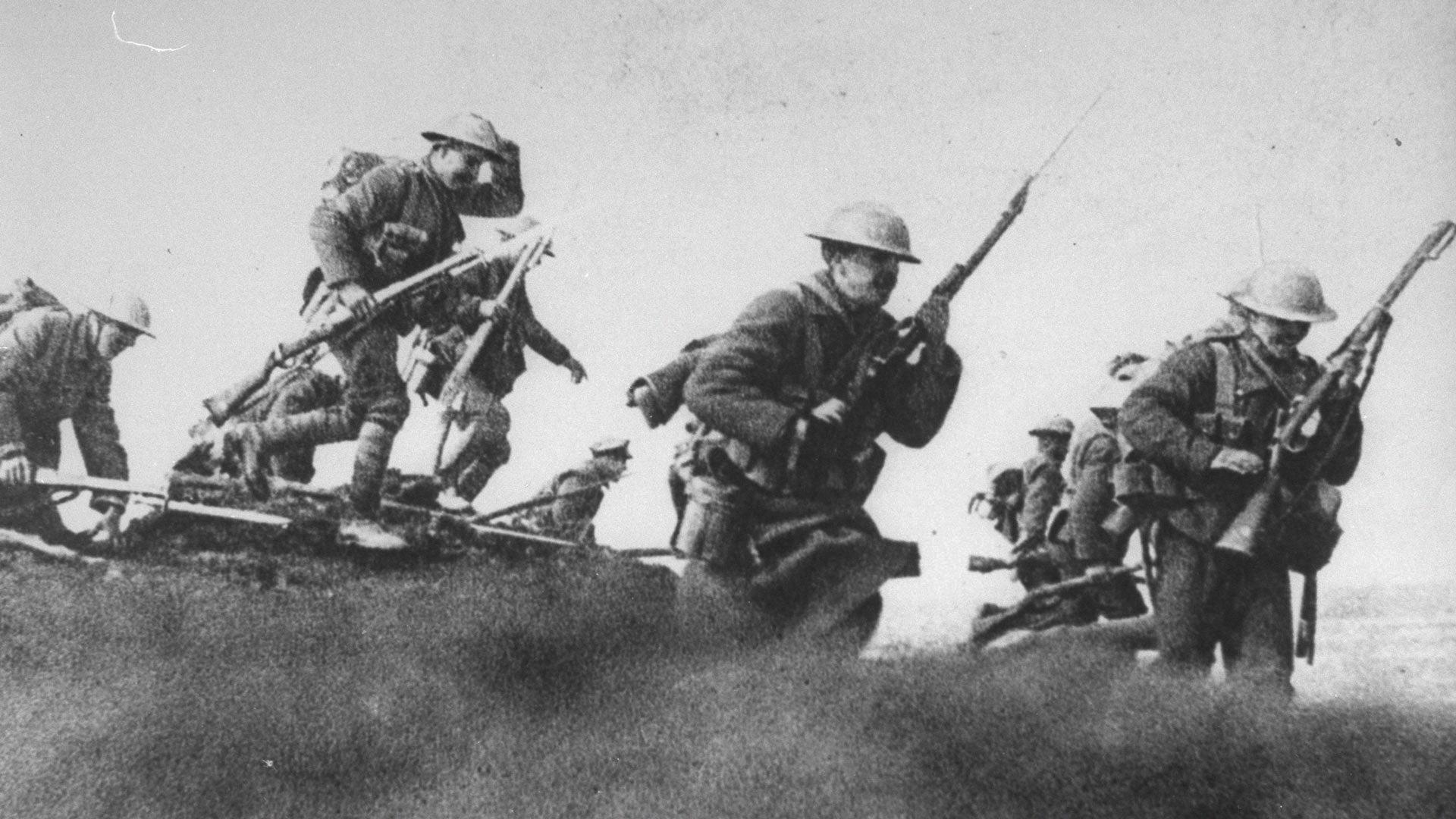The Battle of the Somme, fought between July and November 1916, was one of the deadliest battles of the First World War. The armies of the British Empire and the French Third Republic fought against the German Empire in an attempt to break through their lines and reach the heart of Germany. The battle resulted in significant casualties on both sides, but the question remains: who won the Battle of the Somme?
The British and French forces launched a massive offensive against the German lines on July 1, 1916. However, the initial attack was a disaster for the Allies, as they suffered heavy losses due to German machine gun fire. The first day of the battle alone saw over 57,000 British casualties, of which 19,000 were killed in action. Despite the heavy losses, the British and French continued to fight on, and eventually, they were able to make some gains.
Over the course of the battle, the British and French forces were able to push the Germans back and gain some territory. However, these gains came at a high cost. The British suffered 360,000 casualties, while the French lost 200,000. The Germans, in turn, lost between 500,000 to 600,000 men.
In terms of territory, the Allies were able to make some gains. They were able to push the German lines back and create a bulge in the Noyon salient. However, the gains were not significant enough to be considered a decisive victory.
So, who won the Battle of the Somme? The answer is not a simple one. While the Allies were able to make some gains, the battle was ultimately inconclusive. The heavy casualties suffered by both sides and the limited territorial gains made it difficult to declare a clear winner. However, it is important to note that the Battle of the Somme did have significant strategic implications. The Allies were able to weaken the German army and create a diversion that allowed them to launch other offensives elsewhere on the Western Front.
The Battle of the Somme was a brutal and deadly battle that saw significant casualties on both sides. The British and French forces were able to make some gains but were unable to achieve a decisive victory. Ultimately, the battle had significant strategic implications and played a key role in the outcome of the First World War.
The Outcome of the Battle of the Somme
It is a commonly held view that the Battle of the Somme was a costly stalemate, with neither the Allies nor the Germans achieving a decisive victory. However, it is generally accepted that the German army suffered greater losses than the British and French forces combined. Estimates suggest that between 500,000 to 600,000 German soldiers were killed, wounded or captured during the course of the battle, while British casualties were approximately 419,654 men and French casualties were around 204,253. Therefore, while the battle did not result in a clear victory for either side, it can be argued that the Germans lost the Battle of the Somme.

The Outcome of the Battle of Somme for Germany
The Battle of the Somme was fought between the armies of the British Empire and French Third Republic against the German Empire during the First World War. The battle lasted for 141 days, from 1 July 1916 to 18 November 1916. The battle was fought on a 30 km front and the objective of the Allies was to break through the German lines and advance towards the German capital of Berlin.
The battle resulted in an indecisive outcome, with neither side achieving a clear victory. However, the battle did result in significant casualties for both sides, with an estimated 1.3 million casualties on all sides. The Germans, in particular, suffered heavy losses, with an estimated 465,000 casualties.
While the battle did not result in a clear victory for either side, it did have strategic implications. The German army was forced to divert troops from other fronts to reinforce their lines at the Somme, weakening their overall position. The battle also marked the first large-scale use of tanks in warfare, which would go on to play a significant role in future battles.
Therefore, while Germany did not technically “lose” the Battle of the Somme, the battle did have significant strategic implications and resulted in heavy losses for the German army.
The Final Outcome of the Battle of the Somme
The final outcome of the Somme battle was characterized by significant losses on both sides. The British suffered the most with 360,000 casualties, while the French lost 200,000 and the British Empire lost 64,000 soldiers. Despite the high number of casualties, the Allies managed to make some territorial gains. The battle saw the use of new tactics and weapons, including tanks, which were deployed for the fist time. The Somme battle marked a significant turning point in World War I, as it demonstrated the deadlock of trench warfare and the importance of modern warfare tactics. the Somme was a costly battle that had a significant impact on the course of World War I.
The Outcome of the Battle of the Somme
The Somme offensive, which took place between July and November 1916, was one of the bloodiest battles of World War I, resulting in a staggering number of casualties on both sides. The initial objective of the offensive was to relieve pressure on the French army at Verdun, but it also aimed to break through the German lines and lead to a decisive Allied victory.
In terms of territorial gains and casualties inflicted, the Somme cannot be considered a clear-cut victory for the Allies. However, it should be noted that the British and French were able to achieve several strategic objectives during the battle. The German army was forced to divert troops from the Verdun front to defend against the Allied assault, which helped to ease the pressure on the French. Additionally, the Somme offensive weakened the German army and set the stage for future Allied victories.
It is also worth noting that the Somme offensive marked the first time that tanks were used in battle, providing a glimpse of the potential of this new technology. While the tanks were not yet fully effective, their use at the Somme paved the way for future advances in armored warfare.
While the Somme was not a clear victory for the Allies, it did achieve several strategic objectives and set the stage for future successes.
Conclusion
The British and French forces suffered immense casualties during the Battle of the Somme. The loss of over 560,000 soldiers was a heavy blow to both armies. However, their strategic gains cannot be overlooked. The Allies were successful in driving a bulge into the Noyon salient, which was a significant achievement. the Somme offensive was a demonstration of the horrors and sacrifices of war, but it also showed the resilience and determination of the British and French forces. Despite the high cost, they continued to fight and make progress, ultimately contributing to the eventual Allied victory in World War I.












